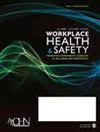Perceived Usefulness of Robotic Technology for Patient Fall Prevention
IF 2.1
4区 医学
Q1 NURSING
引用次数: 0
Abstract
Background:Technology has the potential to prevent patient falls in healthcare settings and to reduce work-related injuries among healthcare providers. However, the usefulness and acceptability of each technology requires careful evaluation. Framed by the Technology Acceptance Model (TAM) and using the Adaptive Robotic Nursing Assistant (ARNA) to assist with patient ambulation, the present study examined the perceived usefulness of robots in patients’ fall prevention with implications for preventing associated work-related injuries among healthcare providers.Methods:Employing an experimental design, subjects were undergraduate nursing students ( N = 38) and one external subject (not a nursing student) who played the role of the patient. Procedures included subjects ambulating a simulated patient in three ways: (a) following the practice of a nurse assisting a patient to walk with the patient wearing a gait belt; (b) an ARNA-assisted process with the gait belt attached to ARNA; (c) an ARNA-assisted process with a subject walking a patient wearing a harness that is attached to ARNA. Block randomization was used with the following experimental scenarios: Gait Belt (human with a gait belt), “ARNA + Gait Belt” (a robot with a gait belt), and “ARNA + Harness” (a robot with a harness). Descriptive statistics and a multiple regression model were used to analyze the data and compare the outcome described as the Perceived Usefulness (PU) of a robot for patient walking versus a human “nurse assistant” without a robot. The independent variables included the experimental conditions of “Gait Belt,” “ARNA + Gait Belt,” and “ARNA + Harness,” the subject’s age, race, and previous videogame playing experience.Findings:Results indicated that PU was significantly higher in the Gait Belt + ARNA and Harness + ARNA conditions than in the Gait Belt condition ( p-value <.01 for both variables). In examining potential influencing factors, the effects of race (White, African American, and Asian), age, and previous video-playing experience were not statistically significant ( p-value >.05).Discussion:Results demonstrated that using robot technology to assist in walking patients was perceived by subjects as more useful in preventing falls than the gait belt. Patient fall prevention also has implications for preventing associated work-related injuries among healthcare providers.Implications:Understanding the effects of a subject’s perceptions can guide further development of assistive robots in patient care. Robotic engineers and interdisciplinary teams can design robots to accommodate worker characteristics and individual differences to improve worker safety and reduce work injuries.机器人技术在预防患者跌倒方面的实用性感知
背景:技术有可能防止医疗机构中的病人跌倒,并减少医疗服务提供者因工受伤的情况。然而,每种技术的实用性和可接受性都需要仔细评估。本研究以技术接受模型(TAM)为框架,使用自适应机器人护理助理(ARNA)协助病人行走,考察了机器人在防止病人跌倒方面的感知有用性,以及对防止医疗服务提供者发生相关工伤的影响。方法:采用实验设计,受试者为护理专业本科生(38人)和一名扮演病人的外部受试者(非护理专业学生)。实验过程包括受试者以三种方式行走模拟病人:(a)按照护士协助病人行走的做法,病人佩戴步态腰带;(b)ARNA辅助过程,步态腰带连接到ARNA;(c)ARNA辅助过程,受试者佩戴连接到ARNA的背带行走病人。在以下实验方案中使用了分块随机法:步态带"(带步态带的人类)、"ARNA + 步态带"(带步态带的机器人)和 "ARNA + 背带"(带背带的机器人)。我们使用了描述性统计和多元回归模型来分析数据,并比较了用于病人行走的机器人与不带机器人的人类 "护士助手 "的 "感知有用性"(PU)结果。自变量包括 "步态带"、"ARNA + 步态带 "和 "ARNA + 背带 "等实验条件,以及受试者的年龄、种族和以前玩电子游戏的经验。研究结果:结果表明,"步态带 + ARNA "和 "背带 + ARNA "条件下的 "感知有用性 "显著高于 "步态带 "条件下的 "感知有用性"(两个变量的 p 值均为 0.01)。在研究潜在影响因素时,种族(白人、非洲裔美国人和亚洲人)、年龄和以前的视频游戏经验的影响没有统计学意义(P值为0.05)。讨论:结果表明,受试者认为使用机器人技术协助患者行走比步态带更有助于预防跌倒。意义:了解受试者认知的影响可以指导辅助机器人在患者护理中的进一步发展。机器人工程师和跨学科团队可以根据工人的特点和个体差异设计机器人,以提高工人的安全性并减少工伤。
本文章由计算机程序翻译,如有差异,请以英文原文为准。
求助全文
约1分钟内获得全文
求助全文
来源期刊

Workplace Health & Safety
NURSING-
CiteScore
3.70
自引率
3.80%
发文量
77
审稿时长
6-12 weeks
期刊介绍:
Workplace Health & Safety: Promoting Environments Conducive to Well-Being and Productivity is the official publication of the American Association of Occupational Health Nursing, Inc. (AAOHN). It is a scientific peer-reviewed Journal. Its purpose is to support and promote the practice of occupational and environmental health nurses by providing leading edge research findings and evidence-based clinical practices. It publishes articles that span the range of issues facing occupational and environmental health professionals, including emergency and all-hazard preparedness, health promotion, safety, productivity, environmental health, case management, workers'' compensation, business and leadership, compliance and information management.
 求助内容:
求助内容: 应助结果提醒方式:
应助结果提醒方式:


